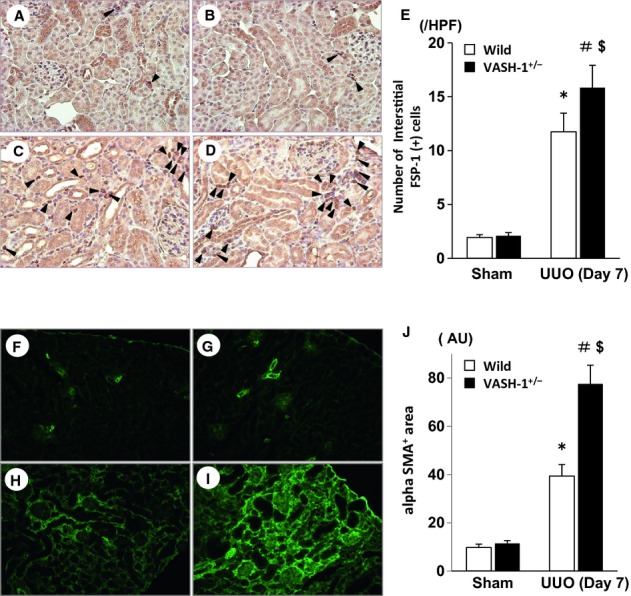Figure 4.

Immunohistochemical staining for FSP‐1 and αSMA. (A–D) The interstitial accumulation of FSP‐1+ fibroblasts (arrowheads) was assessed by an immunohistochemical analysis of wild‐type (WT) sham‐operated (A), VASH1+/− sham‐operated (B), WT unilateral ureteral obstruction (UUO) (C) and VASH1+/− UUO (D) mice. (E) The number of interstitial FSP‐1+ fibroblasts is shown. The quantitative analysis confirmed that there was a significant increase in interstitial FSP‐1+ fibroblasts in the obstructed kidneys (OBK) of the VASH‐1+/− UUO mice. (F–I) The interstitial accumulation of αSMA+ myofibroblasts was assessed by immunofluorescence staining of the WT sham‐operated (F), VASH1+/− sham‐operated (G), WT UUO (H) and VASH1+/− UUO (I) mice. (J) The interstitial αSMA+ area relative to the total tubulointerstitial area was determined by a computer image analysis. The increase in the interstitial αSMA+ area in the OBK of VASH‐1+/− mice (I) was significantly increased compared with that in the OBK of WT mice (H). *P <0.05 versus WT sham‐operated. #P <0.05 versus VASH1+/− sham‐operated. $P <0.05 versus WT UUO. n =5 for each group. Each column shows the means ± SEM.
